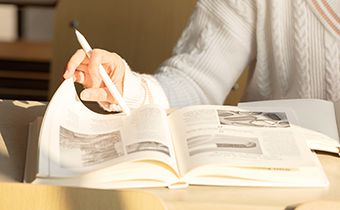教案课件是老师上课中很重要的一个课件,大家正在计划自己的教案课件了。各行各业都在开始准备新的教案课件工作计划了,未来工作才会更有干劲!你们知道多少范文适合教案课件?以下是小编为大家精心整理的“Unit3SpecialDays-”,仅供参考,欢迎大家阅读。
Unit3SpecialDays
LessonTwo
(一)大声读单词:
1.rememberv.记着,记住
2.bringv.带来
3.darknessn.黑暗
4.quizn.小测验
5.hourn.小时
6.factn.事实
7.infact实际上
8.equaladj.相等的,相同的
9.fewadj.不多,很少
10.minuten.分钟
11.afraidadj.害怕
12.sameadj.相同的
13.Marchn.三月
14.meanv.意指某事,意思是
15.monthn.月份
16.setv.下落
(二)重点词汇:
1.remember
要点:remembertodosth.记着要去做某事
rememberdoingsth.记得做过某事
例句:Iremembertodomyhomework.我要记得去做家庭作业。
Irememberdoingmyhomework.我记得我做过家庭作业了。
2.bring
要点:bring带来/take带去,拿走
例句:Couldyoubringsomecakes?Iamhungry.你能带点蛋糕来吗?我饿了。
Pleasetakethesecakestoyoumom.Ithinksheishungry.请把这些蛋糕拿给你妈妈吧。我想她饿了。
3.darkness
要点:形容词变名词
例句:dark–darkness
good–goodness
kind–kindness
4.hour
要点:anhour一个小时
halfanhour半小时
5.afraid
要点:beafraidofsth./sb.害怕某事/某人
例句:Iamafraidofworms.我害怕虫子。
Lindaisafraidofmathteacher.Linda害怕数学老师。
(三)重点词组:
1.specialdays特别的日子aspecialholiday一个特别的假期
2.twelvehoursofdarkness/light12小时的黑暗/光明
3.namesofthesedays这些天的名称namesofthemonths这几个月的名称
(四)课文解析:
1.Thelongestdayoftheyearisinsummer.
Theshortestdayoftheyearisinwinter.
要点:形容词最高级
thelongest最长的
theshortest最短的
2.Thesedaysgiveusmorehoursoflight.
Thesedaysgiveusfewerhoursoflight.
要点:more更多,fewer更少
例句:IwantmorebooksaboutEnglish.我想要更多的英语书。
Ihopetohavefewerquizzes.我希望考试少一些。
3.Atschool,ourscienceteacherteachesthesethingstous.
译文:在学校,我们的科学老师把这些知识教给我们。
要点:scienceteacher
mathteacher
Englishteacher
Chineseteacher
要点:teachsb.sth.=teachsth.tosb.教某人……
例句:CherryteachesusEnglish.
CherryteachesEnglishtous.
要点:teachsb.todosth.教某人去做某事
Iwillteachyoutoswim.
Shewillteachustosing.
延伸阅读
Unit 3 What color is it Starter Unit 3 What color is it?教学设计
Unit3Whatcolorisit教学设计
StarterUnit3Whatcolorisit?
课程目标
一、知识和能力目标
通过本单元教学,使学生能运用所学英语,正确地描述物体的颜色;同时进一步学习分辨人物的用语,并加以运用。
二、过程和方法目标
本单元口语训练应当自始至终在一种鲜明的色彩背景下进行,旨在营造那种为学生所喜爱的欢快气氛,教师应当在十种颜色上大做文章;在使用实物时要使颜色醒目;在组合图画时,要尽量用大色块;在使用投影时要使颜色突出来。教师可以从教室环境上入手营造色彩气氛,如:选取十种颜色的硬色板,剪成各个大写字母;或者将色板剪成各种卡通动物形象,悬挂在教室当中或在墙上,注明各种颜色的英语字块。
三、情感态度和价值观目标
用各种可以调动学生积极性的活动来提高学生的活跃性,激发他们参与讨论的热情。同时可以对学生进行美育教育,从小培养他们对美的正确认识。
学情分析
“Whatcolor"学生在学习的过程中很容易把它错写成或错读成“What’scolor”,因此在练习中要反复强调。
教学准备
Atape-recorder,一张白纸和各种颜色的彩笔
课时参考
四课时
Period1
Stepl:Introduction
(1)Dodutyreport.Askstudentstotaketurnstododutyreport(getstudentstotellashortstory)onebyone.
(2)Hangthewhitepaperontheblackboard,writethecapitalletter“A”witharedpen,thenaskthestudents:
T:What’sthisinEnglish?Ss:It’sanA.
T:Whatcolorisit?
Theteacheranswersherself:It’sred.
(3)Theteacherteachestheothercolorswiththecolorpens,repeatthesewordsuntilstudentsgraspthem.
Step2:Lead—in
Dothesamestepsoftheletterslistonlaastheteacherdidintheintroduction.Makesurestudentsknowantheselettersandwords.
Step3:Practice
Getstudentstoworkinpairs,practicethedialogueappearinthepictureof1a.Allowstudentsusetheotherthingsinsteadoftheletterswhiletheyareaskingthecolors.
step4:Listening
Do1b,2a,2band2cinturn.(Doenteringfamousschool)
Period2
Step1:Lead—in
Taketurnstodothedutyreport.
Reviewthelessonlearnedbyaskingthestudentstosayoutthetwenty—sixlettersinrightorders.Do2a,2b,2cand2dwiththewholeclass.
Step2:Pairwork
Dotheguessgame.Askstudentstoworkinpairstopractiselikethefollowing:
T:Excuseme,what’sthisinyourbag?S:Isitapen?
T:Yes,you’reright.Whatcolorisit?S:It’swhite.
T:No,you’rewrong.S:Isitred?
Step3:Grammar
Gothroughthegrammarfocusandmakesureallthestudentsknowwhatmeans.Ifpossible,theteachercanuseChinesetoexplainthem.
Step4:Practice
Dotheco1orchangesgame,usetwosmallcupsofwater,coloreachcupofwateryellowandblue.Ask:Whatcolorisit?It’syellow.
Whatcolorisit?It’sblue.
Afterasking,pourthecupofyellowwaterintotheothercup,whenthewaterturnsgreen.Askstudents:Whatcolorisitnow?
Dothecolorchangeswiththeothercolors.Yellow+red=orange,yellow+red+black=brown,yellow+red+blue+black,etc.
A1sotheteachercanletstudentsdiscusswhatcolortheobjectsarearoundussuchasthecolorofthetrafficlights,letter—box,bananasandsoon…
(Doenteringfamousschool)
Period3
Stepl:Lead—in
Dothedutyreportinturn.
PractisethedialogueinlaofsectionA
Askstudentstofinish1aand1bofsectionBindividual.theteacherwalksaroundtheclass,giveahandtothestudents.
Step2:Pairwork
First1etthestudentschecktheanswersoflabyaskinglikethefollowing:
A:What’sthis?B:Isita“pen”?
A:Yes。itis.Canyouspellit?B:Yes.P-E-N,PEN.
A:Youareright.
Thentheteachercheckstheanswersoflawiththewholeclass.
Step3:Listenandrepeat
ListouttheletterA0ntheblackboardandencouragethestudentstosayoutwhatotherwordsalsomakethesamepronunciation.Presenttheotherlettersthesameastheletter.
Step4:Groupwork
Getstudentspayattentiontoalltheabbreviationsappeararoundus,copythemdown,trytofindwhattheymean.Thentellyourpartners.Encouragestudentst0searchonlineorfinishthishomeworkinotherways.
Step5:Classwork(Doenteringfamousschool)
Period4
Step1:Gothroughallthecontentslistonthispart,makesureallthestudentsunderstandthem.Iftheydon’t.youmayuseChinesetoexplainit.
Step2:Classwork(Doenteringfamousschool)
单元教学测评
一、将26个字母按发音分类(写出与所给字母含有相同音素的其他字母)
Aa____________________________________________________________________
Ee____________________________________________________________________
Ii_____________________________________________________________________
Oo___________________________________________________________________
Uu____________________________________________________________________
Ff____________________________________________________________________
Rr____________________________________________________________________
二、从A、B、C、D中选出含有相同音素的选项号中的要求写出以下单词的适当形式
()1.A.afB.bpC.djD.ir
()2.A.biB.drC.gpD.jp
()3.A.hlB.euC.hmD.nx
()4.A.mwB.srC.cfD.zl
()5.A.hzB.svC.vhD.fs
三、按括号内所给要求写出适当形式
1.White____________(反义词)2.color(n.)_________(动词)
3.boy____________(反义词)4.Mr___________(对应词)
5.father__________(对应词)
四、单项选择
()1.It’s___________black.It’s________blackruler.
A./;/B.a;/C./;aD.a;a
()2.---________isthatquilt?—It’sblack.
A.WhichcolorB.HowcolorC.WhatcolorD.What’scolor
()3.一Whoisthatgirl?一The______inthebluejacket?
一Yes.--It’sZhangLei.
A.oneB.anC.aD./
()4.What’sthat_____English?
A.atB.toC.inD.on
()5.一Whatcolorisherjacket?一It’s_______.
A.anorangeB.orangeC.theorangeD.aorange
五、句子配对
AB
1.What’sthisinEnglish?A.Theoneinblue.
2.Isthisabook?B.He’smyfather.
3.Who’sthatman?C.It’sorange.
4.Whatcoloristhatorange?D.Yes.itis.
5.Howareyou?E.It’samap.
6.Whichboyisyourbrother?F.No,it’syellow.
7.Whatisthis?G.It’sanorange.
8.Isthatjacketblack?H.Fine,thankyou.
六、改错(下列各句均有一处错误,找出并改正)
1.Whatcoloristhatruler?Itsared.
ABCD
2.Thisisherbluecolorbike.
ABCD
3.Mr.GreenisintheChinanow.
ABCD
4.Canyouspellapen,please?
ABCD
5.What’scoloristhis?
ABCD
七、阅读短文,判断正误:正确的写“T”错误的写“F”
JaneWhiteisanAmericangirl.Sheisastudent.Sheisfifteen.HerfatherisMr.White.HermotherisMrs.White.Bobisherbrother.Heisastudent.t∞.Heisinablackjacket.Janeisinaredjacket.Sheisanicegirl.
()1.JaneWhiteisEnglish.
()2.Sheisastudent.
()3.Mr.Whiteishermother.
()4.Janeisfourteen.
()5.JaneisMrs.White’sdaughter.
()6.BobisJane’sbrother.
()7.JaneisBob’sbrother.
()8.Bobisateacher.
()9.JaneisinredandBobisinblack.
()10.Janeisanicegirl.
参考答案
一、AHJKEBCDGPVZIYOUWFLMNSXZR
二、1-5BCDDD
三、1.black2.color3.girl4.Mrs5.mother/mom/mum
四、1-5CCACB
五、1-8GDBCHAEF
六、1.Dred2.D去掉3.CChina4.Cpen5.AWhat
七、1-5FTFFT6-10TFFTT
Unit3InBeijing
每个老师需要在上课前弄好自己的教案课件,是认真规划好自己教案课件的时候了。必须要写好了教案课件计划,未来的工作就会做得更好!究竟有没有好的适合教案课件的范文?以下是小编收集整理的“Unit3InBeijing”,供您参考,希望能够帮助到大家。
Unit3InBeijing
一、一周内容概述
1.学会therebe结构的表示法及一般疑问时。
2.掌握书信、信封、贺卡及电子邮件的书写格式。
3.学会用英语请求帮助与提供帮助。
4.了解形容词与副词修饰对象的不同。
二、重难点提示
(一)重点句子
1.Therearemanycars,busesandbicycles.
therebe句型是“某地有某物”的意思,它表示的“有”是指“存在”。句型中的be(is,are)必须与它后面所跟名词(主语)在“数”上保持一致。
e.g.Thereisapictureonthewall.
墙上有幅图画。
Therearesomebooksonthedesk.
书桌上有些书。
当therebe后面所跟名词有两个或两个以上时,动词be通常与最靠近它的名词在“数”上保持一致。
e.g.Thereisacoatandtwoshirtsontheclothesline.
晾衣服绳上有一件外套和两件衬衫。
Therebe与have/has的区别
Therebe结构与充当实义动词的have/has都可作“有”讲,但have/has作“有”讲时,表示所有关系,即“拥有,占有”;而Therebe结构表示客观上的存在,不说明所有关系。试比较:
Mrs.Greenhasthreechildren.(说明三个小孩归Mrs.Green所有)
Therearethreechildrenunderthetree.(说明树下存在三个小孩)
2.How’stheweatherinChina?
中国的天气怎么样?
How用来问程度,表示……怎么样?
e.g.Howisyourteacher?
你的老师怎么样啊?
Howaboutgoingboatingtomorrow?
明天去划船怎么样?
我们还可以用What’stheweatherlike?来询问天气。
上面的话也可以说成What’stheweatherlikeinChina?
3.Iseesomechildrenplaying.我看到一些孩子在玩。
本句中playing是现在分词做宾语补足语,表示动作在进行中。see是感官动词,使用的结构为seesb.doingsth.感官动词后面的宾语补足语还可以用省略了to的动词不定式即seesb.dosth.,表示看到了动作的全过程。
e.g.Iseesomechildrenflyingkites.
Sheheardsomeonesingingnextroom.
4.英文信件的写法
一般格式英文书信的构成可分为6个部分:信头、收信人姓名及地址、称呼、正文、结束语、署名。
(1)信封的格式
①写信人的姓名、地址写在信封正面的左上角。
②收信人的姓名、地址写在信封正面中央稍偏右的地方。
③邮票贴在信封的右上角。
④地址的写法是先写收信人或寄信人的姓名,然后按照从小到大顺序依次写出门牌号、街道、城市、省、或州名、邮编,最后写国名。如下:
(2)正文的格式
①把寄信人的地址和日期(简称“信头”)写在信纸的右上角。地址的写法同信封。
②把收信人的姓名、地址(简称“内地址”)写在寄信人地址和日期的左下方,即信纸的左边,低于寄信人日期一至二行处。私人信件此项内容可以不写。
③把称呼写在收信人姓名、地址下面,相距一行处。称呼一般以“Dear…”开头,后面用逗号。如无“内地址”,可以把称呼向上顺移。收信人称前通常冠以尊称:
Mr.(Mister)用于无职衔的男子
Mrs.(Mistress)用于已婚女子
Miss.(Mistress)用于未婚女子
Dr.(Doctor)用于博士
Pro.(Professor)用于大学教授
Ms用于女士通称
④书信正文从称呼下一行的3至5个字母开始。
⑤如同汉语信一样,英文信的结尾也常写有“祝好”、“盼来信”、“代向……问好”之类的话,我们称之为“结束语”。
⑥在信的结尾下面签上自己的姓名。除了对熟人或亲密的人以外,签名必须写全姓名,而且不管什么信件,都应由写信人亲笔签名。
(3)E-mail的写法
写e-mail和写英文信相差不多,主要由称呼、正文和落款三部分构成,全文基本上靠左写,如下文:
(二)重点单词与短语
1.goforawalk去散步
e.g.Iusuallygoforawalkwithmylittledogaftersupper.
我通常晚饭后和我的小狗一起散步。
Doyouwanttogoforawalkinthegardenwithme?
你愿意和我一起到花园去散步吗?
也可以用haveawalk来表示“散步”的含义。
Iusuallyhaveawalkwithmylittledogaftersupper.
2.takeataxi打的,坐计程车
e.g.Togettomyhome,youcantakeataxifromtheairport.
你可以从飞机场坐计程车到我家。
Doyouusuallytakeataxitogotoschool?
你通常坐计程车去上学吗?
3.letsb.dosth.让某人做某事
let是一个使让动词(使役动词),其后接动词原形。
e.g.Let’splaybasketball!
我们一起去打篮球吧!
Don’tletthelightonwhenthereisnobodyintheroom.
没有人在房子里的时候不要让灯点着!
4.takeapicture照相
e.g.Canyoutakeapictureforme?
你能为我照张相吗?
Let’stakeapictureofthegarden.
我们照一张花园的相片吧!
takeaphoto也可以表示“照相”,上面的句子可以说成:
Let’stakeaphotoofthegarden.
5.film做“胶卷,胶片”解时是不可数名词;做“电影”解时是可数名词。
e.g.arolloffilm一卷胶卷
Haveyouseenanygoodfilmslately?
你最近看过什么好电影吗?
Whataboutseeingafilmaftersupper?
我们晚饭后去看电影好吗?
三、语法小结
(一)Therebe句型
1.Therebe句型的否定形式
将Therebe句型的肯定句变为否定句只要直接在be的后面加上not即可(常用缩写形式isn’t或aren’t)。若肯定句中有some,要将其变成any。
e.g.Therearesomebooksonthedesk.
→Therearentanybooksonthedesk.
2.Therebe句型的一般疑问句及肯、否定回答
Therebe句型的一般疑问句较简单,在肯定句的基础上将be提到句首,句末加上问号即可,若肯定句有some,也要将其变成any。肯定回答是:Yes,thereare/is;否定回答是:No,therearen’t/isn’t.
e.g.Thereisapictureonthewall.
→Isthereapictureonthewall?(一般疑问句)
Yes,thereis(No,thereisnt).(肯定/否定回答)
Therearesomebooksonthedesk.
→Arethereanybooksonthedesk?(一般疑问句)
Yes,thereare.(No,therearen’t.)(肯定/否定回答)
3.Therebe句型的特殊疑问句
(1)对Therebe结构的提问,若是对作主语的名词提问,无论是单数还是复数,均用“Whatis(What’s)+地点状语?”。注意:提问时be只能用is,回答时却要根据具体情况确定。
e.g.Thereisaboatintheriver.
→What’s(there)intheriver?
→Thereisaboat.
Therearesomebikesunderthetree.
→What’sunderthetree?
→Therearesomebikes.
(2)对主语前的数字(或修饰)提问,如果主语是可数名词,则用句型“Howmany+名词+arethere+地点状语?”形式。
e.g.Thereisonlyoneglassofwateronthetable.
→Howmanyglassesofwaterarethereonthetable?
(二)形容词和副词
1.形容词修饰名词,说明事物或人的性质或特征。大部分形容词加-ly可构成副词。但friendly,deadly,lovely,lonely,likely,lively,ugly,brotherly仍为形容词。
e.g.Hersingingwaslovely.
Hespoketomeinaveryfriendlyway.
有些以-ly结尾既为形容词,也为副词,如daily,weekly,monthly,
yearly,early等。
e.g.TheTimesisaweeklypaper.
《时代周刊》为周刊。(weekly为形容词)
TheTimesispublishedweekly.
《时代周刊》每周发行一期。(weekly为副词)
2.副词主要用来修饰动词、形容词、副词或其他结构。
副词的位置在动词之前,be动词、助动词之后。
(1)大多数方式副词位于句尾,但有时也可将副词提前,以使句子平衡。
e.g.Wecouldseeveryclearlyastrangelightaheadofus.
我们清楚地看到前面有奇怪的光。
(2)副词well,badly,hard等只放在句尾。
e.g.HespeaksEnglishwell.
他英语说得好。
Unit3Whydoyoulikekoalas?
老师会对课本中的主要教学内容整理到教案课件中,大家开始动笔写自己的教案课件了。是时候对自己教案课件工作做个新的规划了,这样接下来工作才会更上一层楼!你们了解多少教案课件范文呢?下面是小编精心收集整理,为您带来的《Unit3Whydoyoulikekoalas?》,欢迎大家与身边的朋友分享吧!
Unit3Whydoyoulikekoalas?
一、教学内容:
Unit3Whydoyoulikekoalas?
(一)语言功能:Describeanimals;Expresspreferences
描述动物;表达好恶
(二)目标语言:
1.Whatanimalsdoyoulike?Ilikeelephants.
2.Whydoyoulikepandas?Becausethey’reverycute/interesting/smart.
3.Wherearelionsfrom?LionsarefromSouthAfrica.
4.Sheisverybeautifulbutsheisveryshy.
(三)重点单词和词组
1.firstnum.第一
Thisclasswearegoingtolearnthefirstlesson.今天我们学习第一课。
adv.首先,最初。用作状语,修饰动词或句子。
Lettheoldmangofirst.让老人先走。
adj.最初的,首先的
ThefirstthingtousistolearnEnglishwell.对我们来说首要的事是学好英语。
2.(1)kind常用作名词,表示“种,类”表示一个种类的用kindof+名词,名词一般用单数,名词前不加冠词.
—Whatkindofmoviedoyoulike?—Ilikeactionmovies.
—你喜欢哪种电影?—动作片。
Whatkindoffruitdoyouwant?你想要哪种水果?
akindof一种allkindsof各种各样的
manykindsof很多种类的differentkindsof不同种类的
(2)kind用作形容词,表示亲切的,和蔼的
Theteacherisverykindtous.老师对我们很好。
(3)kindof有点,稍微相当于副词,修饰形容词或动词。
Themonkeyiskindofsmart.这只猴子有点聪明。
Ikindoflikehim.我有几分喜欢他。
3.other(1)用作形容词,“其他的,另外的”
Whatotheranimalsdoyoulike?你还喜欢什么其他的动物?
Canyouseeothergirls?你能看见其他的女孩吗?
(2)other用作代词在“one…theother…”结构中,指两个中的另一个。
Ihavetwopens,oneisblack,theotheriswhite.
我有两支笔,一支是黑色的,另一支是白色的。
Ican’tfindtheothershoe.我找不到另一只鞋。
4.friendly友好的befriendlytosb.=bekindtosb.对某人友好
befriendlywithsb.和某人关系好
Theteacherisfriendlytothestudents.老师对学生很友好。
Thechildrenherearefriendlywitheachother.这里的孩子相互友爱。
5.sleepv.睡觉
Wesleepeighthourseveryday.我们每天睡八小时。
sleep指睡,睡着的全过程
gotobed强调动作,不含睡着之意。
Ilikegoingtobedearly,butsometimesIcan’tsleep.
我喜欢早点上床休息,但有时不能入睡。
sleeping睡眠中的,睡觉的asleepingchild睡着的孩子
6.atnight在晚上侧重指下午六点到午夜
intheevening在晚上,指天黑到睡觉前这段时间
duringthenight指夜间,指天黑到天明这一段时间
allnight=allnightlong整夜goodnight晚安nightafternight一夜又一夜
inthenight在夜间dayandnight日以继夜
duringtheday在白天=intheday
MrSmithworksduringthedayandstudiesatnight.
史密斯先生白天干活,晚上学习。
7.表示动物名称的词(animals)
panda熊猫tiger老虎elephant大象dolphin海豚lion狮子penguin企鹅giraffe长颈鹿dog狗koala树袋熊
8.playwith与……一起玩耍用……玩耍
ShelikestoplaywithherfriendsandeatMcDonald’s.她喜欢与朋友一起玩耍,一起吃麦当劳。
Theboyenjoysplayingwithhisdog.那个男孩喜欢和他的狗玩耍。
9.relaxv.放松,休息=havearest
Howlongcanwerelaxhere?我们能在这休息多久?
I’mtootired,Iwanttorelax.我太累了,我想休息一下。
relaxedadj.放松的
Hewillberelaxedifhefinisheshisworkbefore6:30.
如果他6:30之前完成工作的话,他就轻松了。
10.too,also,eitheradv.也
too,also用于肯定句。too用于句末。also用于句中,放在动词前,情态动词、助动词、be动词后。
IliketeachingEnglish.Helikesteachingit,too.我喜欢教英语,他也喜欢教英语。
Ihavenoodlesforbreakfast,LiLeialsohasnoodles.我早餐吃面条,李蕾也是吃面条。
either用于否定句,放在句末。
Idon’thaveanywater.Hedoesn’thaveanywater,either.我没水,他也没了。
(四)重点句型和表达法
1.Pleasebeveryquiet.请安静。
祈使句是表示命令、请求的句子。
Openthedoor,please.请开门。
Pleasetellmethetruth.请告诉我真相。
否定式的祈使句,在句首加上don’t.
Don’tplayonthestreet.不要在街上玩。
Don’tbelateforclassagain.不要再迟到了。
(1)不要太晚睡觉。
(2)请安静,我有话要说。
2.Isn’thecute?难道他不可爱吗?
否定疑问句。否定疑问句是带有惊异、赞美、反问、失望、责难等语气的句子。
表示“难道……不……吗”
Don’tyouknowhim?难道你不认识他吗?
Can’tyouseeit?难道你看不见它吗?
答语,形式上与一般疑问句的答语是一样的。但翻译成汉语时,应注意其不同之处。
Yes翻译成“不”,No翻译成“是”
Aren’ttheflowersbeautiful?Yes,theyare.No,theyaren’t.
难道这些花不美丽吗?不,它们美丽。是的,它们不美丽。
Doesn’theliketalkingwithothers?Yes,hedoes.No,hedoesn’t.
难道他不喜欢与别人交谈吗?不,他喜欢。是的,他不喜欢。
3.Let’sseethepandasfirst.我们先看熊猫吧。
祈使句句型。Let’s=Letus
Letsb.dosth.让某人做某事。表示说话人的建议。
肯定回答:OK/Allright/Yes,let’s…
否定回答:Sorry,I…
—Let’shavearest.–OK.—让我们休息一下。—好吧。
—Let’ssinganEnglishsong.我们唱一首英语歌吧。
—Sorry,Ican’tsingit.对不起,我不会。
—Let’sgotothezootoseetheanimals.让我们去动物园看看动物吧。
—Sorry.ButIhavenotime.对不起,我没时间。
(1)—让他帮帮我们吧。—好吧。
(2)—让他们休息一下吧。—不行,他们必须完成工作。
4.Sheisverybeautiful,butshe’sveryshy,sopleasebeveryquiet.
她很漂亮,但很害羞,因此请保持安静。
so是连词,意为“因此,所以”。英语中不能说,because…so
Heistootired,sohewantstogotobedearly.他太累了,所以他想早点睡觉。
Becauseheistootired,hewantstogotobedearly.因为他太累了,他想早点睡觉。
(1)因为我饿了,所以我想吃些东西。
(2)汤姆起床晚,因此他常常上学迟到。
文章来源:http://m.jab88.com/j/60993.html
更多猜你喜欢
更多-
 Module3Unit3 Module3Unit3 一.词组 1.事实上________________________2.抚养;教育;提出(讨论等);呕吐______ 3.对…作出解释;导致_______________4....
Module3Unit3 Module3Unit3 一.词组 1.事实上________________________2.抚养;教育;提出(讨论等);呕吐______ 3.对…作出解释;导致_______________4.... - Unit3UndertheseaPart3Grammer Unit3Underthesea Part3Grammer动词ing形式的被动语态 Ⅰ.动词ing形式的被动语态的构成形式: v.ing形式的被动形式有一般式和完成式两种形式,即beingdone和h... 小学语文微课教案 11-09
- Unit 3 Travel journal教案3 Unit3Traveljournal TheFirstPeriod ●从容说课 Thisisthefirstperiodofthisunit.Thisunitisabouttravel,sothete... 高中教案教案 07-06
- Unit 3 What color is it Starter Unit 3 What color is it?教学设计 Unit3Whatcolorisit教学设计 StarterUnit3Whatcolorisit? 课程目标 一、知识和能力目标 通过本单元教学,使学生能运用所学英语,正确地描述物体的颜色;同时进一步... 小学教学教案 11-20
最新更新
更多-
 高考英语一轮复习Unit4 2011高考英语一轮教学案大纲版 Unit4 要点诠释 单词 1.appointvt.挑选某人做某工作,委任;约定 讲:结构:appointsb.任命某人 appointsb.as/tobe...任命...
高考英语一轮复习Unit4 2011高考英语一轮教学案大纲版 Unit4 要点诠释 单词 1.appointvt.挑选某人做某工作,委任;约定 讲:结构:appointsb.任命某人 appointsb.as/tobe...任命... - 高考英语第一轮选修六总复习教案 高考英语第一轮选修六总复习教案 高考英语一轮单元总复习讲义精品荟萃外研版选修六Module5 知识详解 1.refuse v. 拒绝 (回归课本P58)WhenFrankensteinrefusest... 高中生物一轮复习教案 12-09
- Unit4TheWorldofNumbers教案 Unit4TheWorldofNumbers Ⅰ.Period:The1stperiod Ⅱ.Teachingcontent:ReadingAinPage50 Ⅲ.Teachingtype:readi... 高中教案教案 12-09
- TheSecretofLife教案 TheSecretofLife教案 Book9Module2 DNA—theSecretofLife I.教学内容分析 本模块介绍了关于DNA的研究现状、最新成果并对未来这一高科技领域的发展进行展望,... 高中教案教案 12-09
- 初一《秋天的怀念》教案设计 一、教学目标 1、体会将浓烈的感情寄托在叙事中的写法; 2、掌握人物的动作、语言、神态描写的作用。 二、教学重点: 深刻体会母爱的无私、博大、宽容和深厚。 三、教学过程 1、导入——在我们的生活中,与... 小学秋天教案 12-09
- 苏教版七年级上学期语文夏家庭作业题 夏天是一年四季中第一个收获的季节。夏天是自然界的季节,也是人生的季节,是火热激情的季节,是五谷丰登的季节。接下来我们一起来练习七年级上学期语文夏家庭作业题。 苏教版七年级上学期语文夏家庭作业题 1.根... 小学语文五年级教案 12-09
- 高考英语第一轮语法专题复习教案 高考语法专题:情景交际 考纲新研读 1.交际项目一般体现在40个常见的语言功能项目中,重点考查相 互介绍、打电话、表达欣赏、征询意见、看法、意见、预测、 劝说等。 2.干扰项的设置主要考虑了以下三点:... 高中生物一轮复习教案 12-09
- 英语:Unit8SectionA(1a—2)教案 英语:Unit8SectionA(1a—2)教案 I.教学内容:1a,1b,1c,2c II.教学目标: 1、知识目标: words:commentsuggestionalbumpersonalspe... 小学英语英语教案 12-09
- 高三英语单词表人教版:UNIT13 高三英语单词表人教版:UNIT13 UNIT13 informaladj.非正式的 WilkieCollins威尔基·柯林斯(英国小说家) RachelVerinder雷切尔·韦林德 Godfrey戈... 高中英语单词教案 12-09
热门推荐
- 《我的叔叔于勒》教案
- 九年级英语It must belong to Carla Period One导学案
- 九年级英语全册Unit 14 I remember meeting all of you in Grade 7教案
- 8BUnit6词汇词组句型
- 八年级英语上Unit1Friends(第4课时)教案(牛津译林版)
- 人教版八年级历史下册《艰辛探索和建设成就》教学设计
- 温度和温度计
- 八年级语文上第23课现代诗两首课堂导学设计(北京课改版)
- 八年级竞赛讲座(第19讲平行截割)
- 八年级下册语文《马说》教学反思
- 人教版八年级上册诗词五首《雁门太守行》课堂教案
- Unit8Ourthings教案
- 苏教版七年级下册语文复习资料全套
- 七年级历史上册知识巧记忆
- 第10课中华文化的勃兴(二)教学设计
- 人教版七年级生物下册《尿的形成和排出》教学设计1
- 图形的全等数学活动--设计象形图教学案
- 七年级历史下16课抗击外国侵略的英勇斗争导学案(北师大版)
